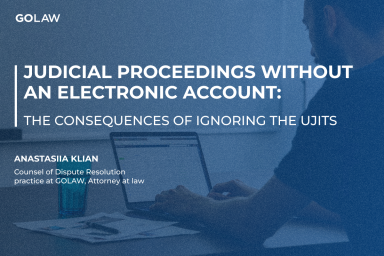How to recover damages arising out of a traffic accident in criminal proceedings?
Contents
- What are the requirements for a civil claim in this group of cases?
- The criminal proceedings materials contain evidence that the victim has got injuries because of the accident. For example, a forensic medical expert’s report states that the victim has suffered injuries of medium gravity. Is it necessary to additionally provide substantiation for a civil claim?
- How is the amount of property and non-pecuniary damage to be recovered established?
- Does the court may reduce the amount of non-pecuniary damage to be recovered?
- The civil liability of a suspect or accused as a driver of a land vehicle must be compulsorily insured. Is it necessary for an insurance company to participate as a co-defendant in criminal proceedings when considering a civil claim?
A civil claim, if properly reasoned, may be an effective mechanism for compensation of property and non-pecuniary damage caused by the wrongful actions of a convicted person.
Though, it has certain specifics depending on the criminal offense, which is the matter of pre-trial investigation or trial.
In this article, we consider the nuances of drafting and reasoning a civil claim in criminal cases involving violations of traffic safety rules.
What are the requirements for a civil claim in this group of cases?
The requirements for a civil claim in criminal proceedings are no less formal than in civil proceedings. Nevertheless, the structure and content of a civil claim in a criminal case relating to any criminal wrongdoing remain unchanged from claims presented in civil litigations.
Therefore, a civil claim must contain all the elements outlined in Article 175 of the Civil Procedure Code of Ukraine.
The criminal proceedings materials contain evidence that the victim has got injuries because of the accident. For example, a forensic medical expert’s report states that the victim has suffered injuries of medium gravity. Is it necessary to additionally provide substantiation for a civil claim?
Frequently, civil claims are filed without adequate evidence to substantiate the victims’ claims for damages. However, no harm is obvious to the court.
The fact that the victim suffered at least injuries of medium gravity determines a traffic violation as a criminal, not an administrative, offense.
In this regard, distinguishing between the injury resulting from a criminal offense as a factor influencing the qualification and the indemnification for damages to safeguard civil rights and interests is crucial.
The criminal proceedings materials presented to the court by the prosecutor aim to prove the commission of a crime and the offender’s guilt under Article 286 of the Criminal Code of Ukraine, rather than the amount of property and moral harm inflicted on the victim.
The amount of damage shall be proved by the victims themselves, as it lies beyond the state prosecution.
Furthermore, it would be improper to allude to the criminal proceedings’ materials in the abstract because they may include conflicting evidence.
Hence, it is crucial to provide evidence of payment for medical services and the victim’s hospitalization or outpatient care, expenses for medicines, automobile repair costs, etc. with a civil claim. The court based on this evidence shall assess the reasonableness of the victim’s claims in the event of a guilty verdict.
It should also be noted that the aforementioned and other evidence must be disclosed to the parties of the criminal proceedings under Article 290 of the Criminal Procedural Code of Ukraine.
How is the amount of property and non-pecuniary damage to be recovered established?
The abstract evaluation cannot determine the extent of damage, it must correspond to the actual property or non-property losses suffered by the victim due to the accident and be adequate to redress the violated rights.
In a civil claim, while the extent of property damage is established through verifiable documentation, such as healthcare costs and rehabilitation expenses, non-pecuniary damages are evaluated by the victim’s judgment.
Nevertheless, the victim is required to specify what are the moral damages in the claim, the criteria employed for their quantification, and the available supporting evidence.
The amount of non-pecuniary damage suffered by the victim is determined exclusively by the court. Thus, the Supreme Court judgments of March 10, 2019, in case No. 709/1173/17, of March 23, 2023, in case No. 127/35822/21, of January 31, 2023, in case No. 535/171/20, etc. state that the amount of compensation for moral damage is determined by the court considering:
- the nature and extent of the suffering (physical, mental, etc.) experienced by the victim, nature of non-pecuniary losses (their duration, possibility of recovery, etc.);
- the state of health of the victim;
- the severity of the forced changes in his/her life and labor relations;
- the loss of prestige, business reputation, time, and effort required to restore the previous state, based on reasonableness, prudence, and fairness.
Thus, if the victim refers to non-pecuniary losses because of moral or physical suffering, each of these must be proven.
For example, in substantiating a civil claim, the victim refers to the inability to return to an active lifestyle for a long time. However, to support this fact, it is required to provide evidence that the victim has led such a lifestyle before the accident. It also applies to the need for additional medical examinations and treatment because of injuries sustained as a result of an accident, if the victim so asserts non-pecuniary damage.
Does the court may reduce the amount of non-pecuniary damage to be recovered?
As earlier indicated, it is at the discretion of the court to decide an equitable amount of compensation for non-monetary injury, thus a decrease in the claim’s amount is viable.
The court eventually may reduce the amount of compensation for non-pecuniary damage not only because the claims are unreasonable, but sometimes also because of the victim’s misconduct.
Thus, in the Supreme Court’s judgment of June 02, 2021, in case No. 175/4256/18, considering the provision of Part 2 of Article 1193 of the Civil Code of Ukraine, the court has concluded that if the victim’s negligence contributed to the occurrence or increase of damage, then depending on the degree of the victim’s fault, the amount of compensation should be reduced.
In cases related to traffic accidents, the reduction occurs because of violations of traffic rules by the injured person, which may be separate administrative offenses.
As an illustration, in case No. 175/4256/18, the victim breached road safety protocols by crossing the street when the traffic signal was indicating to stop, which led to the collision, and in case No. 709/1173/17, the victim neglected to secure her seat belt while traveling in the passenger seat, intensifying her injury.
The civil liability of a suspect or accused as a driver of a land vehicle must be compulsorily insured. Is it necessary for an insurance company to participate as a co-defendant in criminal proceedings when considering a civil claim?
Compensation for damage caused as a result of a traffic accident, including the insurer’s liability within the maximum insurance amounts, covers the Law of Ukraine “On Compulsory Insurance of Civil Liability of Owners of Land Vehicles”. However, there is an extensive case law of the Supreme Court on the participation of an insurance company (insurer) in criminal proceedings as a co-defendant.
In the judgment of December 10, 2019, in case No. 199/6524/18, the Supreme Court pointed out the proper list of co-defendants in this category of cases.
Consequently, if the claims are not asserted against all the relevant defendants, most notably, the insurer, the court cannot evaluate the validity of the claims, calculate the damages to be awarded due to the accident, and allocate them proportionally between the insurer and the responsible party within the policy limits.
Failure to file the claims against the insurance company will result in the court dismissing the claims and explaining to the victims and their representatives the right to apply to the court in civil proceedings.
In addition, it is necessary to consider the judgment of the Grand Chamber of the Supreme Court of Ukraine of July 04, 2018, in case No. 755/18006/15-ц.
The court has noted that in cases where tort relations, i.e., those arising from damage, are combined with relations of compulsory insurance of civil liability of owners of land vehicles, the insurer of the damage cause acts as a debtor in tort liability within the amount of insurance compensation.
In this case, the insurance company’s liability is limited to the difference between the actual amount of damage and the amount of insurance indemnity.
It is also worth paying attention to the Supreme Court’s judgment of July 27, 2022, in case No. 431/1397/20. The Court has found that the court’s decision to recover non-pecuniary damage from the convict in full, without considering the insurer’s liability as defined by the insurance contract and certified by the relevant policy, contradicts the Law of Ukraine “On Compulsory Insurance of Civil Liability of Owners of Land Vehicles”.
Furthermore, in this instance, the Supreme Court has reduced non-pecuniary damages equivalent to what the insurer would have paid out, as the victim declined compensation from the insurance company for non-monetary damages.
Therefore, in this category of criminal cases, the participation of the insurer is necessary when considering a civil claim.
Hence, when submitting a civil claim in criminal proceedings concerning traffic violations, it must be acknowledged that the responsibility of proving any harm is on the plaintiff. In addition, the participation of an insurance company as a co-defendant often determines the satisfaction of claims in full.
Find more current court positions, key legislative changes, and insights on Criminal Law in Ukraine at 👇

Kristina Kolchynska
Counsel, Attorney at Law
- Contacts
- 31/33 Kniaziv Ostrozkykh St, Zorianyi Business Center, Kyiv, Ukraine, 01010
- k.kolchynska@golaw.ua
- +38 044 581 1220
Sign up to be aware
New achievements are inspired by information. GO further, don’t miss out GOLAW news and legal alerts
Our expertise
-
- Antitrust and Competition
- Banking and Finance
- Compliance, Corporate Governance and Risk Management
- Corporate and M&A
- Criminal and White Collar Defence
- Defense in Anti-corruption procedures and regulations
- Labor and Employment
- Natural Resources and Environment
- Government Relations (GR)
- Insolvency and Corporate Recovery
- Intellectual property
- International trade
- Legal support of business and private Сlients in Germany
- Litigation and dispute resolution
- Private clients
- Real Estate and Construction
- Energy and Natural Resources
- Restructuring, Claims and Recoveries
- Martial Law
- Tax and Customs
-
- Agribusiness
- Aviation
- Chemical industry
- Engineering, Construction and Building Materials
- Natural Resources and Environment
- Financial institutions
- IT and AI
- Industry and manufacturing
- Healthcare industries, Life sciences and Pharmaceuticals
- Media, Entertainment, Sports and Gambling
- Retail, FMCG and E-Commerce
- Transport and Logistics
We use cookies to improve performance of our website and your user experience.
Cookies policy
Cookies settings







